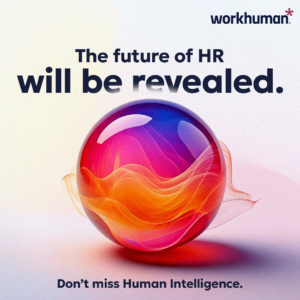
Recognition Done Right: Empowering Your People and Your Business
Sponsored by Workhuman. In recent years, we have seen a confluence of macroeconomic trends and seismic shifts in workplace dynamics that have profoundly impacted company

Sponsored by Workhuman. In recent years, we have seen a confluence of macroeconomic trends and seismic shifts in workplace dynamics that have profoundly impacted company

What an exhilarating experience! I just wrapped up a panel discussion at the Achievers Recognition Next 2024 one-day deep-dive forum in Toronto. Immersive events can

Employee recognition is a must for any organization. But if you’re looking for a one-and-done kind of formula, you’ll probably want to think again. That’s

Sponsored by Firstup For years, Gallup has tracked global employee engagement. Although the trend line has improved somewhat over the past decade, still only 23% of

As artificial intelligence continues to spread across the business landscape, it is transforming work in countless ways. For example, thanks to AI, we’re entering a

Does your organization observe Employee Appreciation Day? Once a year on the first Friday in March, many employers take time to celebrate the commitment and

Sponsored by Workleap Officevibe In most organizations, the human resources team is a primary point of contact throughout the employee journey. From the very first

Recognition matters. We hear it over and over again in leadership books and best practices articles. It makes sense to recognize employees early and often.

Anyone who says being a leader is easy is simply not being honest. Leadership is hard. Yes, I said it. And that shouldn’t shock anyone.

You’re a business leader. You believe in your company with all your heart. Your commitment to the organization’s mission drives you to aim high, work

Long before the pandemic, many organizations struggled with employee engagement. But now, it’s an even tougher hill to climb. Hybrid and remote work have become

Keeping valued employees onboard is top-of-mind for many organizations these days. But what kind of employee retention strategies are actually working? To find out, we

Sponsored by Social Flowers What a difference three years can make! I’m sure that’s what many remote employees are thinking these days. Before the pandemic,

Work Norms Are Changing In 2019, about nine million U.S. civilians worked from home on a regular basis. Then the pandemic arrived. Nearly overnight, remote

Employee appreciation is naturally top-of-mind for employers during the holiday season. But employees actually prefer recognition throughout the year. In fact, according to a HubSpot

As social beings, many of our relationships are based on reciprocity. At work, we’re often involved in transactional behavior, where we expect to receive at

Sponsored by: Cristaux International Kids are known for complaining when things aren’t fair. Although professional adults may not be as obvious as children, they do

Your employees are your most valuable asset. If nothing else, the past two years have surely taught us that. How did organizations survive? Was it

Thanks and praise for a job well done feel good. But recognition happens far less often than it should in our work environments. And employees

The “Great Resignation” has organizations everywhere in strategy mode. They’re brainstorming ways to keep employees happy and in turn, keep them on board. So what’s

While countless aspects of daily work have changed over the past year, one thing remains the same across most organizations: Employees value recognition. In fact,

In some countries, as lockdown measures continue to ease, businesses are opening and employees are heading back to work. But some of us are still

In the past several months, many companies have modified their performance programs. From streamlining their review processes to running more frequent pulse surveys, organizations around

Listen to the full conversation and see our questions for the upcoming #WorkTrends Twitter Chat. And don’t forget to subscribe to the podcast, so you

Do your employees feel recognized for their work? A recent survey revealed 74 percent of employees plan to switch jobs in 2018 and 44 percent